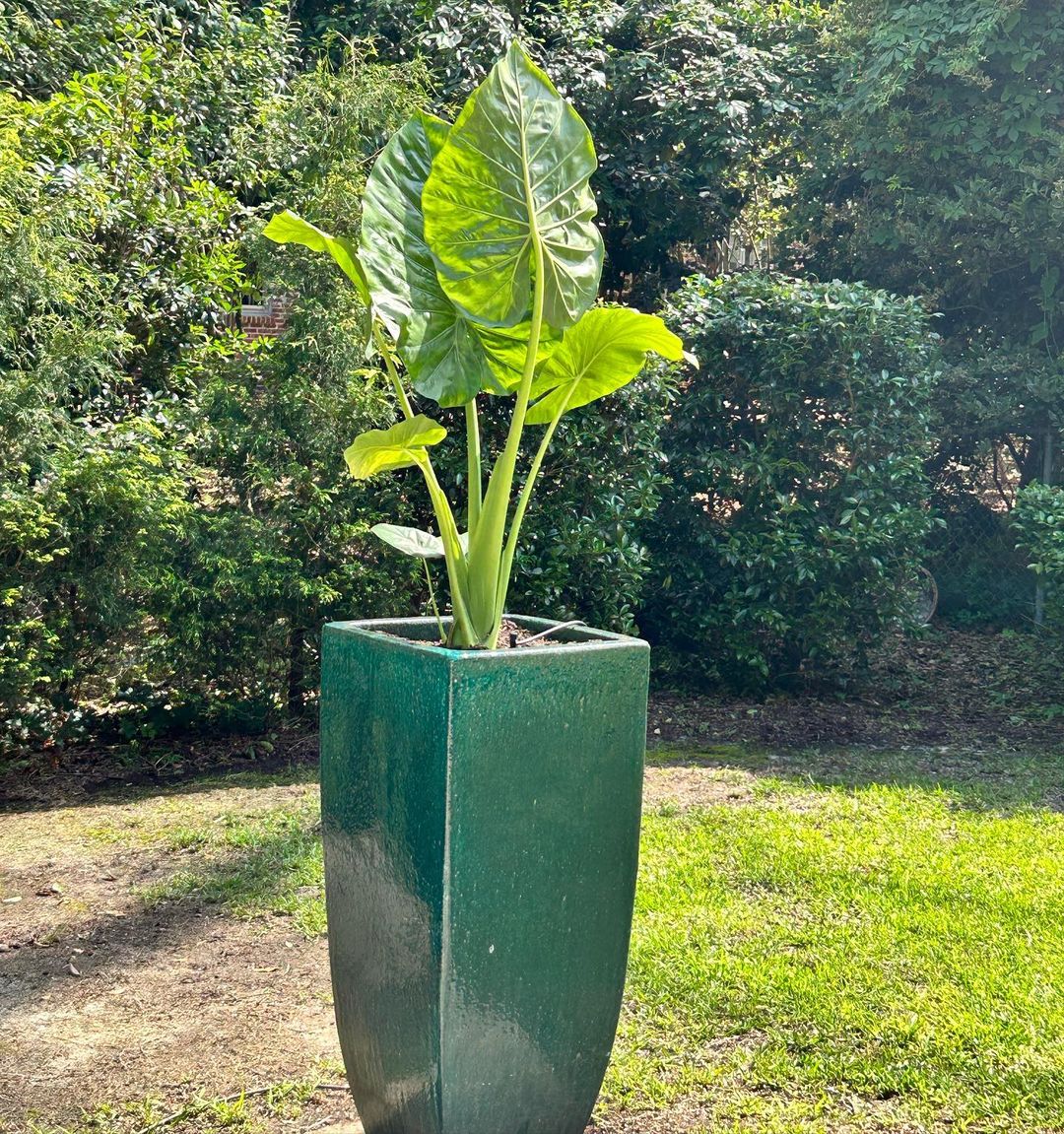Broad striking heart-shaped foliage of Elephant Ears easily becomes a focal point of the yard or garden with its rapid growth and spread.
Thus, read on to unveil the spreading nature of Elephant Ears and learn which ones spread faster than others with proper control measures.
Table of Contents Show
How Fast Do Elephant Ears Grow?
Belonging to the Araceae plant family, Elephant Ears constitute various tropical perennial plants from Alocasia, Colocasia, and Xanthosoma genera.
Elephant Ears are famous and adored by many for their signature broad heart or arrow-shaped leaves.
However, the growth rate differs depending on the types of Elephant Ear plants and growing conditions.
Elephant Ears growing outdoors in well-draining, moist soil with over five hours of filtered sun and afternoon shade grows much faster than in pots.
Nevertheless, they can unfurl one signature leaf per month during active growing seasons, i.e., Spring and Summer.
Remember, when provided with excellent care, the plant can bless you with beautiful Alocasia flowers.
Do Elephant Ears Spread?
Accompanied by a faster growth rate, Elephant Ears can quickly multiply and spread wild in the garden.
Depending on the Elephant Ears or Alocasia varieties, they can spread along the ground via runners.
Without proper control measures, these perennials take the liberty of engulfing all garden spaces.

Moreover, Elephant Ears are not native to the United States, so they are invasive plants in states like Louisiana, Florida, and Texas.
Thus, abstain from planting them without proper caution measures to avoid loss of native vegetation.
That said, a fast-spreading habit of Elephant Ears is beneficial when you have a large, empty garden space.
Regardless, if these spreading plants are considered invasive in your area, avoid planting them entirely.
How to Control Elephant Ears From Spreading?
In a smaller, cozy gardening space, spreading Elephant Ears can become a problem as their giant foliage can shade other plants.
Thus, the proper prior control measures are pivotal to tame the spreading types of Elephant Ears.
Here are a few failsafe methods to control and prevent Elephant Ears from spreading.
- Opt for Elephant Ears that grow on clumps on the ground instead of the ones with runners.
- Grow the spreading Elephant Ears varieties in a roomy pot or raised garden beds.
- Add a thick layer of mulches (2-3 inches) around the plant base to suppress the spread of runners.
- Dig up and carefully remove any excess runner growth from time to time.
- Regularly divide the Elephant Ears during the active growing season to avoid irregular growth in an undesirable fashion.
- Avoid planting Wild Taro invasive plants near the water sources.
- Even if the spread is too severe, dig up the plants carefully using a shovel instead of herbicides.
Editor’s Note
Wear Safety Gears While Digging Up!
Elephant Ear plants are toxic and poisonous to humans and pets, and direct skin contact with the plant sap or juice can cause skin rashes or allergies.
Therefore, wear safety gear from head to toe, including gloves, glasses, and masks, while handling them to control their spread.
All The Best!


